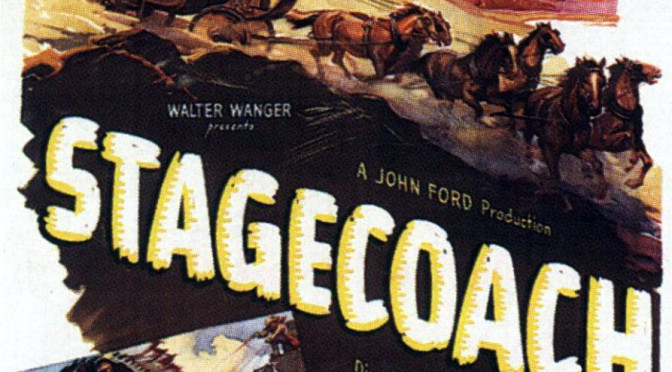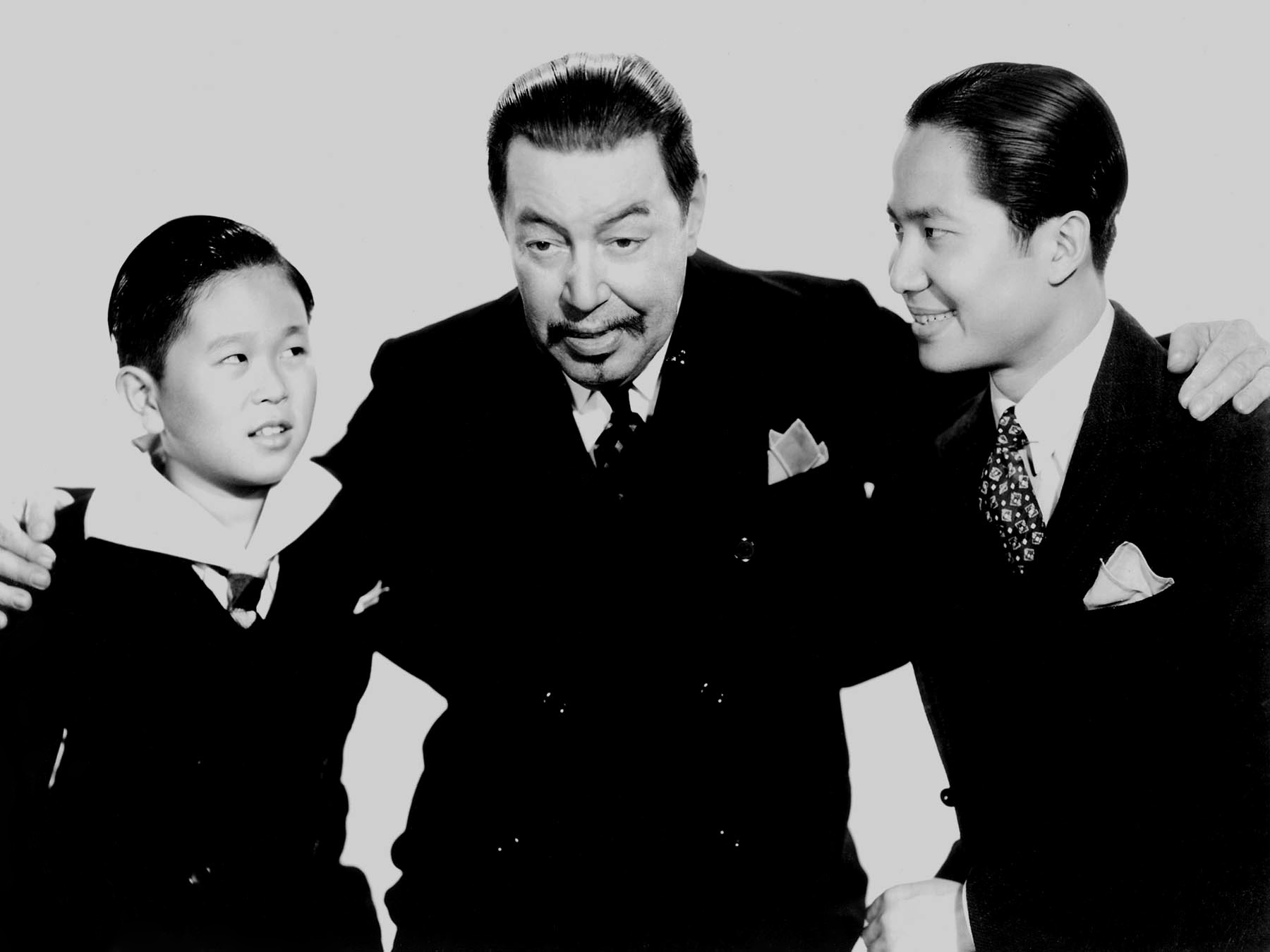There’s been a perpetual myth that the truck stunt in Raiders of the Lost Ark (1981) by Terry Leonard was influenced by a stunt by Yakima Canutt in the movie Stagecoach (1939), but that is not entirely true. Yakima Canutt is definitely the original creator and performer on the stunt, but I think the original idea for the stunt germinated in Stagecoach, then he modified and improved on the stunt in a film series the same year, called Zorro’s Fighting Legion (1939). You can definitely see the progression throughout both movies, and Terry Leonard always wanted to tip his hat by recreating the stunt, first in a botched version in The Legend of the Lone Ranger (1981) and then perfecting it for the truck scene in Raiders of the Lost Ark.
In Stagecoach, Yakima Canutt does two stunts that are of particular note. In the first one, as an Indian, Canutt rides up to the lead horses of the stagecoach, he jumps off his horse and lands between the two horses. There he gets shot by an actor on the stagecoach twice, slips between the two horses and holds on for a bit as he is dragged on his back. When he gets the chance he lets go and lets the other 4 horses and the stagecoach itself pass over him, then he turns over and gets up and runs off. In the second stunt, Yakima Canutt doubles John Wayne and performed the stunt where John Wayne’s character jumps from the stagecoach onto the runaway team. He then jumps from that set of horses to the middle set and then to the two lead horse, while the stagecoach races at top speed. Once on the lead horse he jumps on the saddle and slows the stagecoach down.
Now, for the Zorro’s Fighting Legion stunts, Yakima Canutt, was working with Repubic Pictures, where he performed many stunts for their movie serials over the years. This particular stunt appears in Chapter 7 of Zorro’s Fighting Legion, where Canutt (standing in for Reed Hadley as Zorro) attempts to stop a stagecoach. He rides alongside the horses pulling the stage and jumps onto the back of the lead horse. Then, with bullets whizzing past his head, he swings between the horses and begins to work his way back to the stagecoach. He slides under the stagecoach doing a nifty flip tumble then grabs hold of the back of the stagecoach (I have no idea how he was able to hold on!), climbs up the back, crawls over the top and then punches out the driver. Except for the flip tumble it’s almost exactly like the one in Raiders of the Lost Ark.
Yakima is considered by many to be the first legendary stuntman. He was the first one to be recognized by the Academy of Arts and Sciences for his work as a stuntman. In 1967, he was given an Honorary Academy Award for “achievements as a stunt man and for developing safety devices to protect stunt men everywhere”.
Stagecoach was directed by John Ford for Walter Wanger Productions. Zorro’s Fighting Legion was directed by William Witley and John English.
Things to look up (click on item to go to IMDB):
History of film companies as defined by Wikipedia: Walter Wanger Productions – In 1923, Walter Wanger was appointed head of Paramount’s Long Island Studio. Shortly after, he was made chief of production, holding that position until 1931. After leaving the company due to personality clashes with new senior management, he had brief spells with Columbia and MGM, producing several big hits, such as The Bitter Tea of General Yen (1933) and Queen Christina (1933). Nonetheless, he didn’t get on particularly well with either Harry Cohn or L.B. Mayer and decided to turn independent, releasing his films through Paramount and United Artists. By 1936, Walter Wanger’s own production company had the most substantial star roster of any independent filmmaker in Hollywood, including Madeleine Carroll, Charles Boyer, Henry Fonda and Sylvia Sidney.
Wanger’s first major success as an independent was The Trail of the Lonesome Pine (1936), the first Technicolor feature for Paramount, and also the first to be shot primarily outdoors. In between solid black & white action films and dramas like You Only Live Once (1937) and Algiers(1938), Wanger also produced several expensive all-colour extravaganzas, not all of which paid off at the box office (point in case, Vogues of 1938 (1937), which failed to recoup its cost of $1.4 million). This rather forced United Artists to keep a closer reign on his future expenditure. However, by the end of the decade, Wanger’s reputation increased, with films like Stagecoach (1939) and The Long Voyage Home (1940) (forJohn Ford) and Foreign Correspondent (1940) (for Alfred Hitchcock). Between 1946 and 1949, Wanger succeeded both in strengthening his own production company and in establishing a distribution network (in conjunction with the independent owners of Film Classics), the Wanger-Nassour Releasing Organisation.
Inevitably, the financial vagaries of independent production were beginning to take their toll. Already hamstrung by the financial woes of one of his subsidiaries, Diana Productions (formed in partnership with his wife Joan Bennett, screenwriter Dudley Nichols and director Fritz Lang),Wanger badly overextended himself in his financing of the 145-minute studio-bound Technicolor epic Joan of Arc (1948), starring Ingrid Bergman. The venture effectively bankrupted another of his production companies (Sierra Pictures), set up with Bergman exclusively for the making of the expensive fiasco. “Joan of Arc” ended up being shunned by audiences (who found it long and boring) and critics (who thought it naïve and altogether missing its spiritual mark) alike. Wanger’s financial miscalculation was further compounded in 1951, by his shooting of his wife’s paramour. It landed him in jail for four months for attempted murder.








Hi, just wanted to tell you, I enjoyed this post. It was inspiring.Keep on posting!